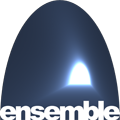Instruction Guide: Introduction to Computers
Note: This lesson in common to both the NXT and EV3 versions of STEM Robotics 101.
This lesson delves into the technology behind the history and parts of computers.
Start by watching the Code.org: "What makes a Computer, a Computer?" video followed by their "CPU, Memory, Input & Output" video.
Review the Introduction to Computers worksheet with students before watching the Intel video.
- Have student take notes during video
- After watching the Intel "Introduction to Computers", supplement discussion with History and Parts of a Computer PPT (use slideshow mode for proper animation)
History of Computers (video/PPT)
Ancient calculating devices included the abacus and Stonehenge
Use the more recent example of a slide rule (optional: show students a slide rule)
Vacuum tubes were used as switches in early computers circuits
- Show sample vacuum tube and/or PPT slide 1
- Vacuum tubes are electronic switches made of conductors and insulators
- Need to operate in a vacuum – like a light bulb
- Ask students to speculate on the 4 problems that limited the success of vacuum-tube based computers:
- Big – filled several rooms
- Hot – each tube generated as much heat as eight 60W light bulbs. Computers had thousands of tubes and used as much electricity as a small town.
- Flakey – they broke down frequently. Wires would come loose, or any of the tubes could burn out like a light bulb
- Expensive – both to build (tubes, other parts, building, air conditioning, etc.) and to operate (required a large staff, electricity cost, replacement parts, etc.). Only the government or large companies could afford these systems.
- Tube based computers had thousands of tubes and were about as powerful as a basic calculator
Show students a “$1.99” calculator and/ or PPT slide 2
- It is not big, it does not get hot, it is not flakey, it is not expensive
Ask students what changed?
- The switch changed from a vacuum tube to a transistor
Show transistor sample and/ or PPT slide 3
A transistor is a semiconductor switch
- Used in modern computer circuits
- Most commonly made of silicon
When multiple transistors are made on one piece of silicon is it called an “integrated circuit” or, more commonly, a “computer chip”
- A microprocessor is a complex computer chip
- Transistors on modern microprocessors are extremely small
- In 2010, a circuit with over one billion (1,000,000,000) transistors would fit on a dime
- We’ll explore this phenomena in the Moore’s Law section of this lesson
The Four Parts of a Computer (video/PPT)
After watching the video supplement discussion with History and Parts of a Computer PPT (use slideshow mode for proper animation)
Ask students name the four parts of a computer and give an example of each part
- Input – keyboard, mouse, microphone, touch-screen, scanner, camera, etc.
- Output – screen, speakers, printer, etc.
- Ask students about a modem (it is both input and output)
- No need to dwell on inputs and outputs, since student are most familiar with these
- Processor – two types:
- Embedded processors – can only be programmed by their manufacturer (TV remote, watches, cameras, etc.)
- Microprocessor – can run programs from many sources (some brand names: Intel, AMD, Pentium, Core, i5, etc.)
- We’ll explore processors in more depth in Hardware/Software/Firware:Micorprocessors lesson
- Storage – two types (PPT slide 3)
- Mechanical drives: (Show drive samples and/ or PPT slide 4)
- Motor spins storage surface
- Hard drive – “hard” magnetic disc
- Floppy drives – “floppy” magnetic disc
- CD/DVD drive – laser readable/writeable disc
- Motor spins storage surface
- Memory chips - RAM, ROM, Flash (Show drive samples and/ or PPT slide 5)
- Silicon chips (semiconductors with many transistors) - no moving parts
- Chip are manufactured on discs of silicon, called wafers
- Each rectangle on the wafer is an individual chip
- Wafer are cut into rectangles, and each chip is put in a package
- Wires connect to the chip and then protrude from the package
- Packaged chip are installed on circuit boards which connect the wires protruding from the chip to other parts of the larger circuit
- RAM – Random Access Memory
- Used to store/run software programs
- Loses content when turned off
- ROM – Read Only Memory
- Used to store/run firmware programs
- Retains contents when turned off
- Firmware written by manufacturer
- Defines “vocabulary” of chip
- Tells chip what to do when first turned on
- Cannot be changed by user
- Flash
- Used for both software and firmware
- Retains contents when turned off
- The Flash “drive” name is misleading – there are no moving parts
- Flash “drives” effectively replaced the floppy drive’s function, so the drive name stuck
- Mechanical drives: (Show drive samples and/ or PPT slide 4)



